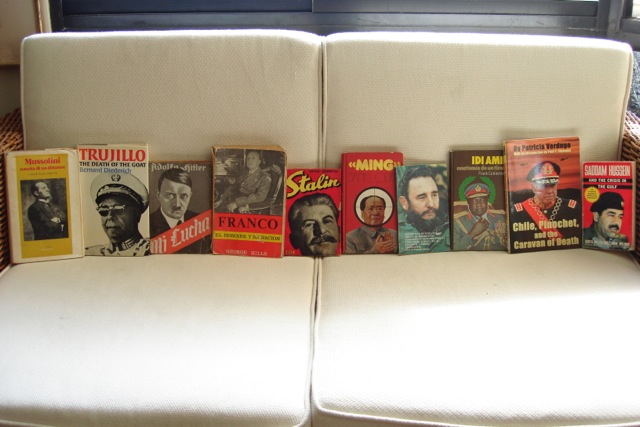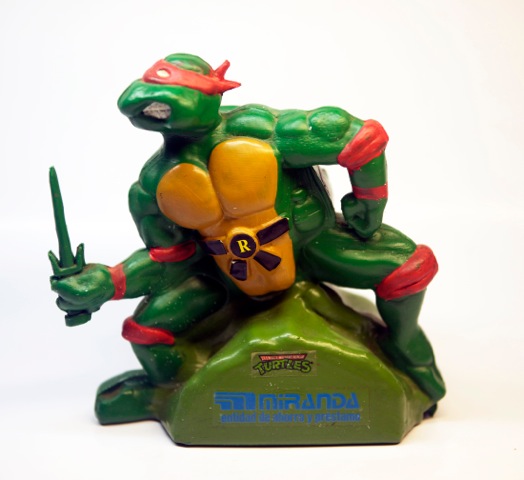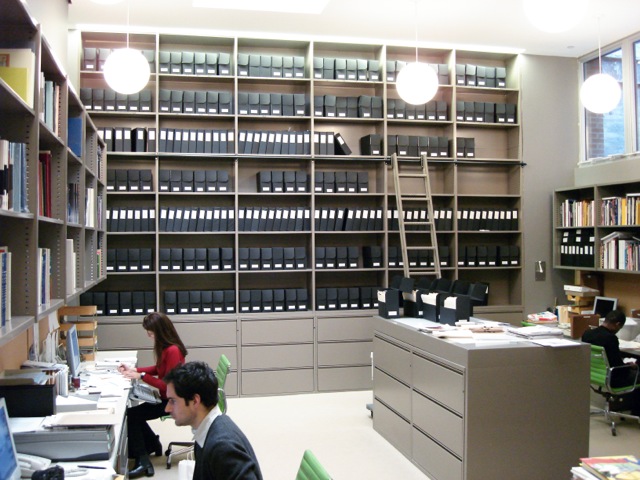LUIS MOLINA-PANTIN
Modus Operandi
Henrique Faría Fine Art
Recepción: Jueves 20 de junio, 6-9 pm
Clausura 27 de julio, 2013
Horario: Martes a sábado 11-6 pm
Registro de sala, cortesía Henrique Faria Fine Art
- Henrique Faria Fine Art se complace en presentar Modus Operandi, la segunda exposición de Luis Molina-Pantin con Henrique Faria y su cuarta exposición en la ciudad de Nueva York. La muestra el 20 de junio de 2013, cuenta con una selección de fotografías e instalaciones que abarcan los veinte años de carrera del artista. La itinerancia de Molina-Pantin a lo largo de países como los Estados Unidos, Canadá, Alemania y Venezuela ha influido y desarrollado su ojo agudo como también su compromiso al exponer las fallas de las instituciones sociales, económicas y culturales. Al apropiarse de objetos específicos y algunos encontrados e insertarlos en el medio artístico, Molina-Pantin recoge paradójicamente lo que él critica. En esta operación, Molina-Pantin urga debajo de la superficie de los elementos comerciales y revela oscuros , pero a la vez interesantes detalles en las sociedades a las que pertenecen.
Luis Molina-Pantin describe su metodología artística -la búsqueda de objetos banales que se han convertido en objetos de diferentes paisajes culturales e históricos- como “arqueología urbana”. La serie “28 alcancías de bancos venezolanos intervenidos o bancos en bancarrota” (2011), se extiende por toda una pared, destacando los colores brillantes y formas divertidas de estas atractivas alcancías personales. La apremiante contradicción se hace evidente cuando el espectador se da cuenta de que estas alcancías están vacías y aun más, reconcilia su presencia con la realidad de inminente de que la tasa de inflación de Venezuela es la más alta en América Latina. Asimismo, Molina-Pantin instala otros “retratos” de los artefactos culturales obsoletos, incluyendo Sin título (15 Brick Mobile Phones) (2011). Navegó Internet al estilo de un Egiptólogo escudriñando materiales en una excavación buscando “antiguos” teléfonos celulares. Alineando el pedestal como lápidas antiguas, estos teléfonos de ladrillo indican el grado en que la tecnología afecta a los objetos, y, en última instancia, nuestro uso de ellos.
De la misma manera que el artista trabaja como un arqueólogo urbano, Molina-Pantin también se esfuerza por descubrir las verdades ocultas detrás de apariencias sociales y culturales muy bien ornamentadas. En la serie Chelsea Galleries (2001-2006), Molina-Pantin continúa en la tradición de artistas Op-Art venezolanos, haciendo hincapié en la estricta disposición lineal y la repetición de las estanterías y archivadores. Haciendo uso de una cámara oculta, Molina-Pantin captura la infraestructura tradicionalmente invisible de la galería: su oficina y el personal directivo. La vitalidad, la energía y el misterio que se encuentra en el arte en exhibición en la galería, se subvierten a través del objetivo del artista sobre lo mundano y administrativo-el paisaje interior de una galería. La exposición del artificio también se halla en la serie Inmobilia (1997), donde el ambiente prístino y genérico por excelencia de una telenovela venezolana no puede escapar del usurpante set de iluminación y la ubicación del almacén que amenazan con revelar el artificio y la generalización de los interiores domésticos de Venezuela al público en general.

Luis Molina-Pantin (1969)
Best-Sellers –International-, 2008
Lambda print
20 x 24 in. (50.8 x 61 cm)
Edition of 150
Es en el constante equilibrio de intercambio entre la apariencia y el significado más profundo, entre la exageración y la hiper-realidad que nos encontramos con la obra de Luis Molina-Pantin. Como Gabriela Rangel concluye: “Las imágenes de Molina-Pantin abordan el lado oscuro de América Latina, que coexisten en cielos turísticos a través de derivas metonímicas.”
Luis Molina-Pantin, venezolano nacido en Ginebra en 1969, vive y trabaja en Caracas. Recibió su BFA en la Universidad de Concordia en Montreal en 1994 y su maestría en Nuevo Géneros en el Instituto de Arte de San Francisco en 1997.
Entre individuales destacadas se incluyen Valores Humanos, Faria-Fábregas Galeria, Caracas (2012), Nuevas Adquisiciones, Periférico Caracas | Arte Contemporaneo, Caracas (2009), Estudio informal de la arquitectura hibrida Vol. 1, La narco-arquitectura y soste las Contribuciones a la comunidad, Cali-Bogotá, Colombia, Valenzuela Klenner Galería, Bogotá (2011), en Federico Luger, Milano y la Galería Marta Cervera, Madrid (2008) y en la Sala Mendoza, Caracas (2007 ) y Confort 1996-2000, Museo Alejandro Otero, Caracas (2000).
Su trabajo también ha sido presentado en numerosas exposiciones colectivas, como: A Different Kind of Order: La Trienal ICP, International Center of Photography, Nueva York (2013), Del Buen Salvaje al Conceptuales Revolucionario, Travesia Cuatro, Madrid (2013), Tres Perspectivas: Arte Contemporáneo de América Latina, el Carnegie Hall, Nueva York (2012), la política del lugar: Fotografía Latinoamericana, pasado y presente, Museo de Arte de Phoenix, Phoenix, AZ (2012), 6ta. VentoSul, Bienal de Curitiba, Brasil (2011); Islas + guetos, NGBK y Kunstraum Kreuzberg / Bethanien, Berlín (2009); séptima Bienal de Gwangju, Gwangju (2008); Urgente! 41 Salón Nacional de Artistas, Museo de Arte Moderno La Tertulia, Cali (2008), Mapas Abiertos, Fotografia Latinoamericana 1991-2002, Palais de Beaux Arts, Bruselas, Bélgica (2008) Las posiciones en Contexto: 2007 CIFO subvenciones para la exhibición del programa, CIFO , Miami (2007); Jump Cuts: Arte Venezolano Contemporaneo, Colección Mercantil, Americas Society, Nueva York (2005) XXV Bienal Internacional de Sao Paulo, Sao Paulo, Brasil (2002), Espejos Buried, Center for Curatorial Studies de Bard College, Nueva York (2001) y la VII Bienal Internacional de La Habana, La Habana, Cuba (2000).
Su obra ha sido adquirida por las siguientes instituciones: el Museo de Bellas Artes de Houston, Centro Andaluz de Arte Contemporáneo, Sevilla, Patricia Phelps de Cisneros Collection, Nueva York y Caracas, el Museo de Arte Latinoamericano, (MOLAA) Long Beach; Diane y Bruce Halle Collection, Scottsdale, AZ, Galeria de Arte Nacional y el Museo de Bellas Artes, Caracas.
_________________________
Nota de prensa en inglés
Henrique Faria Fine Art is pleased to present Modus Operandi, Luis Molina-Pantin’s second exhibition with Henrique Faria and his fourth exhibition in New York City. Opening June 20, the show will feature a selection of photographs and installations spanning the artist’s twenty-year career. Molina-Pantin’s itinerancy throughout the United States, Canada, Germany and Venezuela has both influenced and developed his sharp eye and his commitment to exposing the failures of social, economic and cultural institutions. By appropriating specific and found objects and inserting them into his artistic milieu, Molina-Pantin paradoxically collects that which he critiques. In so doing, he mines beneath the surface of commercial items and reveals sinister, but insightful glimpses into the societies to which they belong.
Luis Molina-Pantin describes his artistic methodology–the search for banal objects that have become artifacts of different cultural and historical landscapes–as “urban archeology”. The series 28 Piggy Banks from Venezuelan Intervened or Bankrupted Banks (2011), spans an entire wall, highlighting the bright colors and fun shapes of these engaging, personal piggy banks. The biting contradiction becomes apparent as the viewer realizes that these piggy banks are empty and further reconciles their presence with the reality of Venezuela’s inflation rate being the highest in Latin America.. Moreover, Molina-Pantin installs other ‘portraits’ of obsolete cultural artifacts, including Untitled (15 Brick Mobile Phones) (2011). He scoured the Internet–just as an Egyptologist would comb through materials at a dig site–looking for now ‘ancient’ cell phones. Lining the pedestal like old tombstones, these brick phones indicate the extent to which technology impacts objects, and, ultimately, our use of them.
In the same way that the artist works as an urban archeologist, he also strives to uncover truths hidden behind beautifully polished social and cultural veneers. In the Chelsea Galleries series (2001-2006), Molina-Pantin continues in the tradition of Venezuelan Op-Art artists by emphasizing the strict linear arrangement and repetition of the bookshelves and filing cabinets. Using a hidden camera, Molina-Pantin captures the traditionally unseen infrastructure of the gallery: its office and managerial employees. The vitality, energy and mystery found in the art on display elsewhere in the gallery are subverted through the artist’s focus on the mundane and administrative-the inner landscape of a gallery. The exposure of artifice is also found in the series Inmobilia (1997), where the pristine and generic environments par excellence of a Venezuelan telenovela cannot escape the encroaching set lighting and warehouse location that threaten to reveal the contrivance and generalization of Venezuelan domestic interiors to the general public.
It is in the constantly shifting balance between appearance and deeper meaning, between exaggeration and hyper-reality that we find the work of Luis Molina-Pantin. As Gabriela Rangel concludes, “Molina-Pantin’s images tackle the dark side of Latin America that coexists within touristy heavens through metonymic dérives.”
Luis Molina-Pantin, Venezuelan born in Geneva in 1969, lives and works in Caracas. He received his BFA at Concordia University in Montréal in 1994 and his MFA in New Genres at the San Francisco Art Institute in 1997.
Selected Solo Exhibitions include Valores Humanos, Faría-Fábregas Galería, Caracas (2012); Nuevas Adquisiciones, Periférico Caracas | Arte Contemporáneo, Caracas (2009), Estudio informal de la arquitectura híbrida Vol. 1, La narco-arquitectura y sus contribuciones a la comunidad, Cali-Bogotá, Colombia, Valenzuela Klenner Galería, Bogotá (2011); in Federico Luger, Milano and Galería Marta Cervera, Madrid (2008) and in Sala Mendoza, Caracas (2007) and Confort 1996-2000, Museo Alejandro Otero, Caracas (2000).
His work has also been featured in numerous group exhibitions, such as: A Different Kind of Order: The ICP Triennial, International Center of Photography, NY (2013); Del Buen Salvaje al Conceptual Revolucionario, Travesía Cuatro, Madrid (2013); Tres Perspectivas: Contemporary Art from Latin America, Carnegie Hall, NY(2012); The Politics Of Place: Latin American Photography, Past and Present, Phoenix Art Museum, Phoenix, AZ (2012); 6ta. VentoSul, Bienal de Curitiba, Brazil (2011); Islands+Ghettos, NGBK and Kunstraum Kreuzberg/Bethanien, Berlin (2009); 7th Gwangju Biennale, Gwangju (2008); Urgente! 41 Salón Nacional de Artistas, Museo de Arte Moderno La Tertulia, Cali (2008); Mapas Abiertos, Fotografía Latinoamericana 1991-2002, Palais de Beaux Arts, Brussels, Belgium (2008); Positions in Context: 2007 CIFO Grants program exhibition, CIFO, Miami (2007); Jump Cuts: Arte Venezolano Contemporáneo, Colección Mercantil, Americas Society, NY(2005) XXV Bienal Internacional de Sao Paulo, Sao Paulo, Brazil (2002); Buried Mirrors, Center for Curatorial Studies at Bard College, NY(2001), and the VII Bienal Internacional de La Habana, Havana, Cuba (2000).
His work has been acquired by the following institutions: The Museum of Fine Arts, Houston; Centro Andaluz de Arte Contemporáneo, Seville; Patricia Phelps de Cisneros Collection, New York and Caracas; The Museum of Latin American Art, (MOLAA) Long Beach; Diane and Bruce Halle Collection, Scottsdale, AZ; Galería de Arte Nacional and Museo de Bellas Artes, Caracas.
Fuente: Henrique Faría Fine Arts




